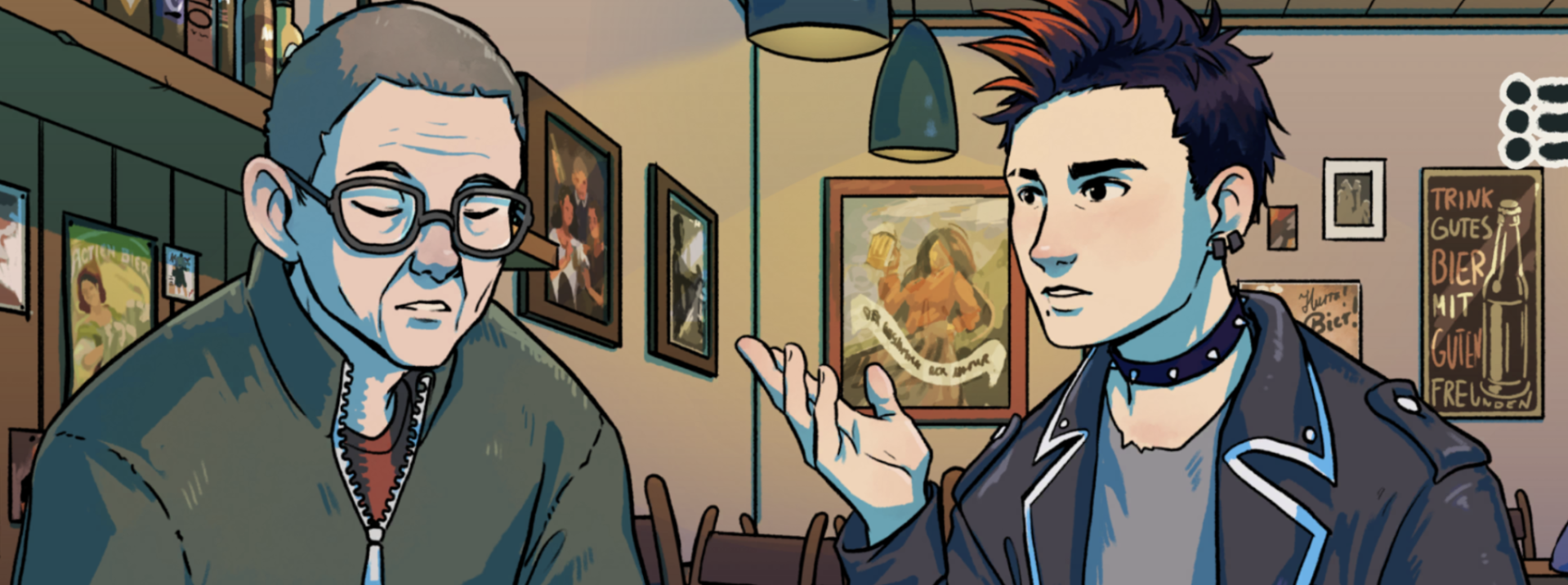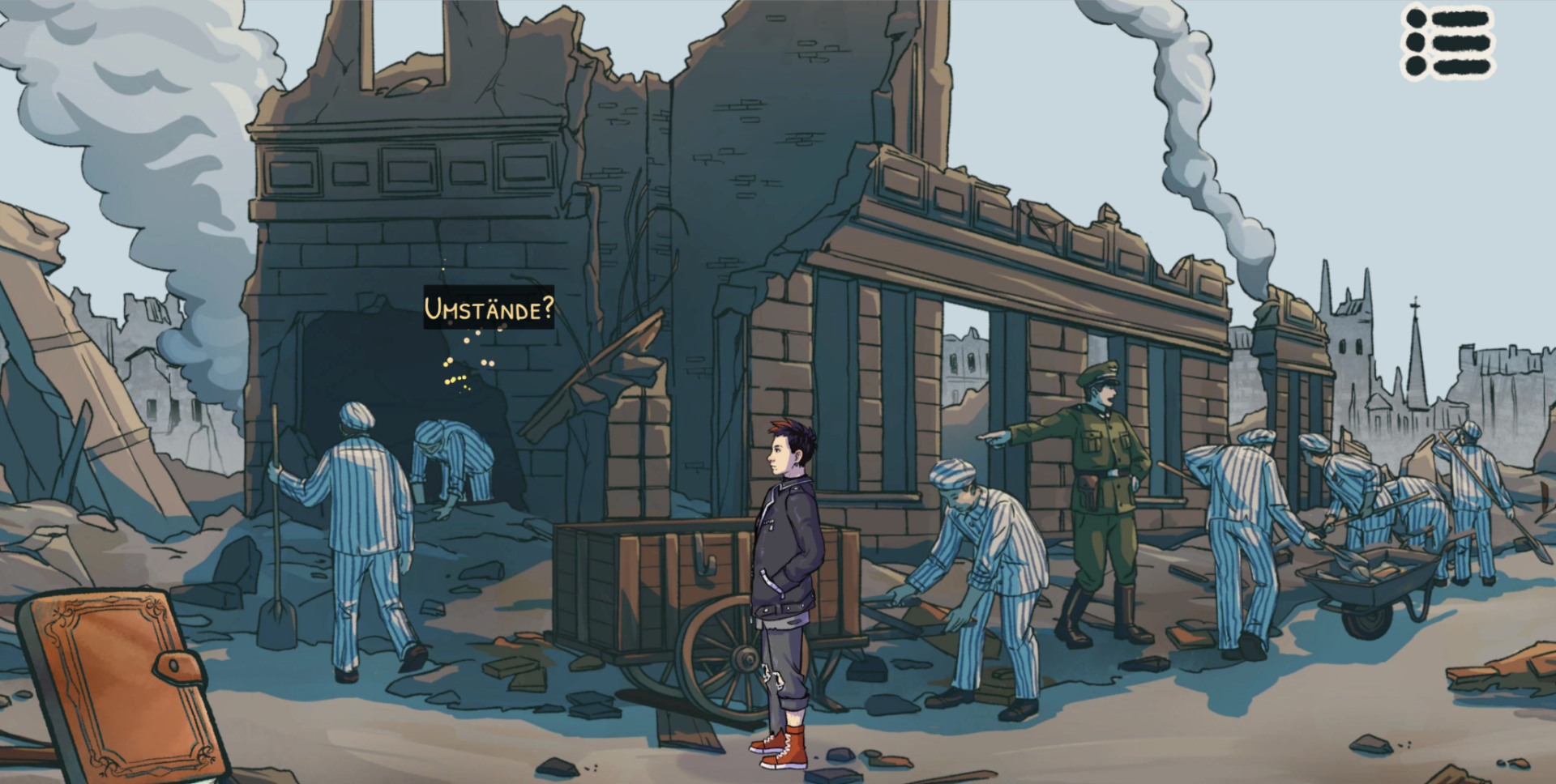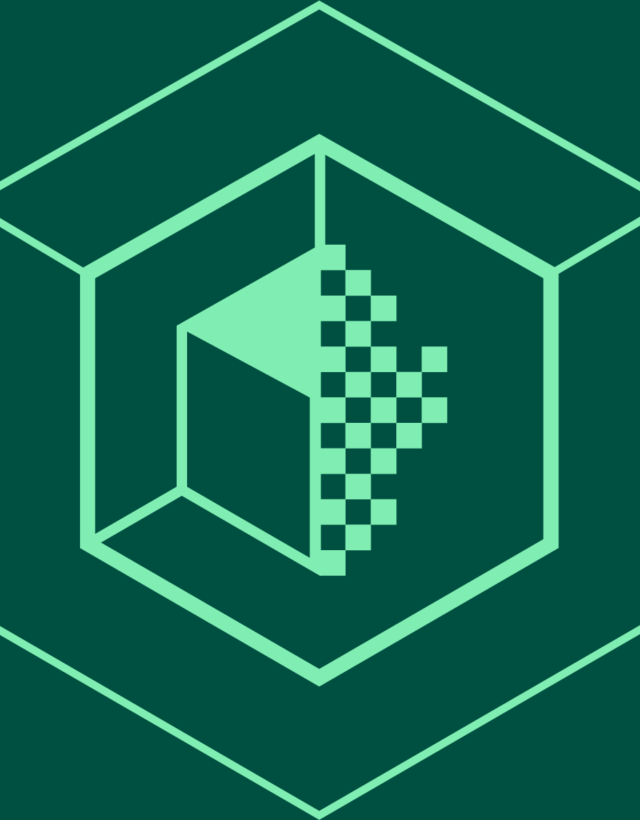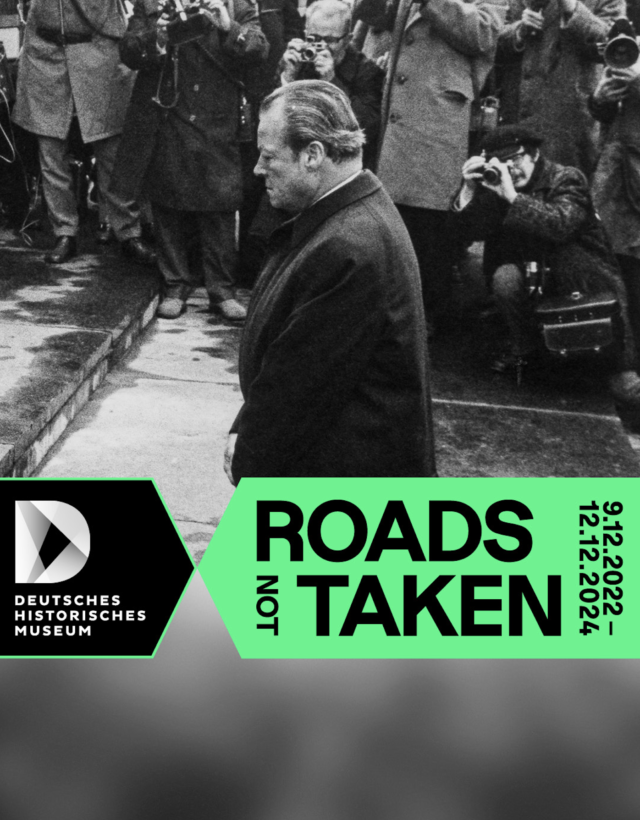NICOLE MATTERN, CHAIRWOMAN OF THE ASSOCIATION KINDER VOM BULLENHUSER DAMM E.V.
In the years before the coronavirus pandemic, Gamescom welcomed more than 350,000 visitors to the Cologne exhibition halls, many of them young people. In terms of exhibition space and visitor numbers, Gamescom is the world's largest trade fair for computer and video games. Many of the games presented make use of historical settings – as a framework for the gameplay or as backdrop for a historical game plot. The Second World War is often chosen as the setting for digital games. However, these games usually do not aim to teach history or conduct accurate historical research – although they would offer every opportunity to do so.
Just like books, films or podcasts, digital games also tell stories. They allow the players to immerse themselves in a story. Many players want to experience and learn something while playing. In these games, history becomes tangible: They thus offer the opportunity to get people who are usually not interested in history to engage with historical topics. During a visit to Gamescom, I overheard two 15- or 16-year-olds talking about a game and drawing parallels between its fictional plot and real historical events. The game’s story had induced them to research the historical facts. Is this an opportunity for schools to make more use of the appeal of digital games to teach historical topics?
As I had already been chairwoman of the Association Kinder vom Bullenhuser Damm for many years at that time, I came up with the idea of a serious game about the Bullenhuser Damm Memorial. A digital game that does not dwell on the past but establishes a link to the present. The story of the children from Bullenhuser Damm is often described as one of the most heinous crimes of the Nazi era: Twenty Jewish children between the ages of five and twelve were hanged by the SS after they had been subjected to medical experiments. But it is also a story of longstanding personal commitment by individuals, of their fight for justice and of people who set foot on German soil again, even though they never wanted to do so after the murder of their relatives.
I regularly give workshops in schools. When I ask students what the Nazi era and the Holocaust have to do with us today, the answer is almost always the same: nothing. Only in conversation it becomes clear that history is still in and around us: in German politics and society, but also in the passing on (or often not passing on) of family memories. In Germany, there was a break in the telling of our own family history that we have not yet come to terms with. Germany can only be understood with knowledge of the Holocaust, even (or perhaps, especially) if parents, grandparents or great-grandparents did not live in Germany during the Second World War. A serious game could be an innovative approach to bringing the topic into the classroom and asking the question of how we deal with German history and what we want to learn from it. Therefore, I contacted Iris Groschek from the Foundation of Hamburg Memorials to discuss the idea with her.

IRIS GROSCHEK, FOUNDATION OF HAMBURG MEMORIALS AND LEARNING CENTERS COMMEMORATING THE VICTIMS OF NAZI CRIMES AND CURATOR OF THE EXHIBITION AT THE BULLENHUSER DAMM MEMORIAL
The suggestion from the Association Kinder vom Bullenhuser Damm that young people need a different, more open and less conservative or traditional approach to history, even when it concerns a place as poignant as the Bullenhuser Damm Memorial. Especially in light of the Arolsen Archives' study 'How does Gen Z view the Nazi era?', I began considering what this approach could look like in digital form.
It was clear from the outset that we did not want to offer a game that merely duplicated the content of the exhibition. We also did not want to immerse the players in the Nazi era in a playful way and suggest to them that a different ending would have been possible for the events at Bullenhuser Damm. On the other hand, it was clear to us that we wanted to take the medium of 'games' seriously. Even if the game were to be didactic, we aimed to offer a form of 'fun gaming experience' to promote engagement with topics related to the Bullenhuser Damm Memorial, the historical events, and the broader theme of remembrance culture, as well as to generate interest in history and remembrance in general. We wanted to address children and young people in the context of their current everyday life. They should be given the opportunity to actively learn about history in order to take home ideas for dealing with current issues. One key part of the Memorial’s work extended by the digital game lies in historical aspects of currently relevant discourses, as well as in highlighting family historical connections up to the present.
Since we at the Foundation of Hamburg Memorials and Learning Centers had not yet dealt with the topic of digital games in depth, we initially worked together with the Association Kinder vom Bullenhuser Damm to obtain expertise from their developers and spoke to several game developers about possible implementations.
To gather initial ideas and thus the basis for the content of a “digital multimedia application,” we organized a two-day online workshop at the end of November 2021. In addition to the Foundation, the Association Kinder vom Bullenhuser Damm e.V., and several departments of the University of Hamburg were involved: the student project History in Virtual Space (GiVR), the Department of History Didactics of the Faculty of Education, the Department of History | Public History as well as students and young professionals in the Applied History / Public History working group in the Association of Historians of Germany. In the course of this collaboration, the participants came up with initial programmatic and conceptual ideas as well as objectives for the design of such a product of digital memorial work and subsequently worked out concrete proposals.
The team developed conceptual and didactic criteria, criteria for the use of media, for participation and interaction, and then even initial design ideas. For example, the idea of another time setting being placed between the time of the crime and the present was concretized here as a level for player agency. The reason for this was that the risk of overwhelming the players by repeating the victim and perpetrator perspectives through the immersive effects inherent in the medium was too great. We were thus able to address the fundamental problem of retrospectivity and its ethical boundaries, which arise by “returning” to the time and place of the crime, by shifting the storytelling to the post-war period.
While many people from the fields of research and education reacted positively to the plan to develop a digital game, we also received more cautious responses, both from the school sector and in the search for funding partners. It took several years before we found a sponsor in the Alfred Landecker Foundation, who considered our open approach worthy of support. With Markus Bassermann, we were able to welcome a project manager who has both expertise as a historian and experience in the field of representing history in digital games.

MARKUS BASSERMANN, PROJECT MANAGER OF THE DIGITAL REMEMBRANCE GAME PROJECT “REMEMBERANCE. THE CHILDREN OF BULLENHUSER DAMM”
I was immediately convinced of the idea to develop a digital remembrance game not as a classic educational game, but to use the medium’s very own language. This corresponded to my own academic examination of digital games, in which I was particularly interested in the question of how history and perceptions of history are conveyed through games and their mechanics, i.e. their interactivity. I was struck by the imbalance that games make use of historical themes as a matter of course, but conversely, history-mediating entities such as memorials have so far hardly made use of this medium.
Consequently, we focused our project on answering the question posed by Nicole Mattern – phrased pointedly as “What does this have to do with me anymore?” – with the possibilities of a digital game. We did not simply want to digitally reproduce the existing methods of the Bullenhuser Damm Memorial but had to consider how we could formulate an independent contribution to the cultural discourse of remembrance through narration, new images and, above all, the interactivity of a game.
This challenge could only be tackled with a joint creative process. That’s why, when looking for a team of developers, we attached particular importance to the fact that they all had a passion for the topic and would work with us as equals, in a mutual exchange. It was motivating to note that our needs aroused the interest of many developers, and that there is a great openness and willingness to participate in the culture of remembrance in this way.
Together with the development studio Paintbucket Games, we elaborated the hitherto vague game idea. We quickly moved away from a strong link to the actual crime, as we realized that we wanted to talk more generally about remembrance and memory. Our goal was not only to highlight the current importance of remembrance culture but also to make it clear that this is the result of an interactive, constantly changing process in which young people will always play a crucial role. We wanted to convey this in the game: “How can we represent ‘remembrance’ interactively?” was added to our initial key question in this sense.
The original project idea described by Iris Groschek provided a solid foundation for this approach. In particular, the temporal embedding of the setting in the 1970s was to prove its worth: It gave us the freedom to give each of our protagonists, five pupils from the school then located at Bullenhuser Damm, specific memory experiences that are related to National Socialism without being directly situated there in time. In this way, we avoided the problem of depicting the Nazi era and the crimes. Due to the freedom of action games require, there is always a tension between the (possibly counterfactual) story depicted and the real historical facts. By shifting to a later time frame, we were able to emphasize the latter where it was crucial, while allowing space for the former in other aspects.
A central mechanism that we decided on was the representation of the changeability of memory: Our protagonists meet people who remember, and whose memory images we present graphically as scenes that can be walked through and interacted with. Instead of just depicting them statically, they can be changed through questions from the protagonists, i.e. through interaction between the players. In this way, we depict different, merging or even contradictory levels of memory in order to give a vivid impression of the changeability of memory. In the game, three perspectives on memory emerge: the perspective of the young people portrayed, the perspective of their interlocutors, and, in a mediated sense, the perspective of the players in the classroom, guided by teachers.
An advisory board was also formed to monitor the project critically, comprising experts from the fields of history didactics, memorial work, public history, digital games, and relatives of the victims, among others. In addition, we began testing the game with focus groups of students in the fall of 2023 in parallel to its development in order to test whether our endeavor is successful. We are pursuing three goals: First of all, we want to know whether our didactic goals can be achieved. It is also important to find out whether “remembrance” also works as a game, i.e. entertains and motivates. And ultimately, it is crucial that these two aspects do not collide but complement and enhance each other. The initial feedback has already convinced us that we are well on the way to developing a true digital remembrance game, rather than a mere educational game that is only concerned with the sober communication of historical facts.
This article was originally published in German in the LaG-Magazine issue “Erinnern in Digitalen Spielen” on December 20, 2023. The full issue can be downloaded here: https://lernen-aus-der-geschichte.de/Lernen-und-Lehren/Magazin/15619


